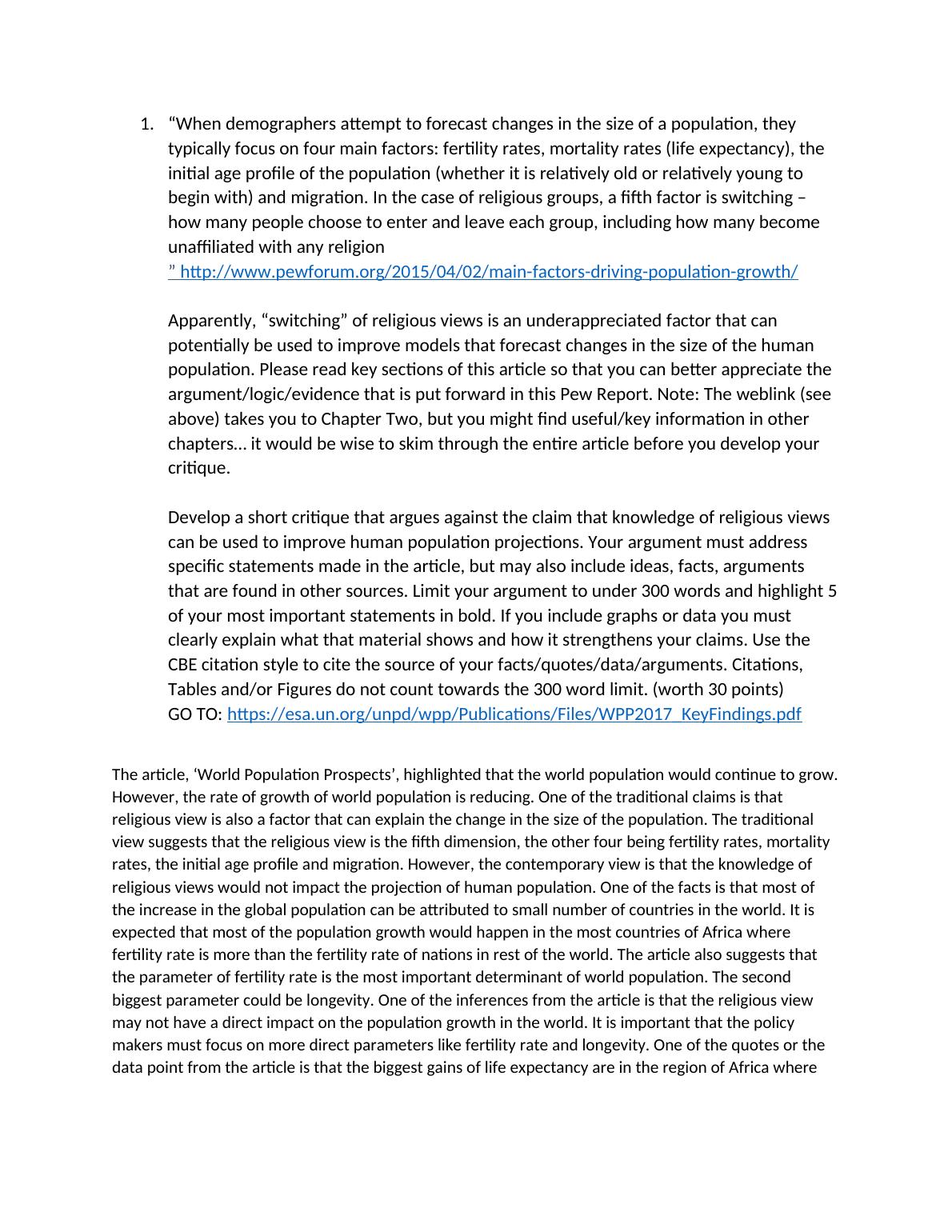Switching - How many people choose to enter and leave a religious group?
Added on 2020-03-23
3 Pages1110 Words359 Views
1.“When demographers attempt to forecast changes in the size of a population, they typically focus on four main factors: fertility rates, mortality rates (life expectancy), the initial age profile of the population (whether it is relatively old or relatively young to begin with) and migration. In the case of religious groups, a fifth factor is switching – how many people choose to enter and leave each group, including how many become unaffiliated with any religion” http://www.pewforum.org/2015/04/02/main-factors-driving-population-growth/Apparently, “switching” of religious views is an underappreciated factor that can potentially be used to improve models that forecast changes in the size of the human population. Please read key sections of this article so that you can better appreciate the argument/logic/evidence that is put forward in this Pew Report. Note: The weblink (see above) takes you to Chapter Two, but you might find useful/key information in other chapters... it would be wise to skim through the entire article before you develop your critique.Develop a short critique that argues against the claim that knowledge of religious views can be used to improve human population projections. Your argument must address specific statements made in the article, but may also include ideas, facts, arguments that are found in other sources. Limit your argument to under 300 words and highlight 5of your most important statements in bold. If you include graphs or data you must clearly explain what that material shows and how it strengthens your claims. Use the CBE citation style to cite the source of your facts/quotes/data/arguments. Citations, Tables and/or Figures do not count towards the 300 word limit. (worth 30 points)GO TO: https://esa.un.org/unpd/wpp/Publications/Files/WPP2017_KeyFindings.pdfThe article, ‘World Population Prospects’, highlighted that the world population would continue to grow.However, the rate of growth of world population is reducing. One of the traditional claims is that religious view is also a factor that can explain the change in the size of the population. The traditional view suggests that the religious view is the fifth dimension, the other four being fertility rates, mortality rates, the initial age profile and migration. However, the contemporary view is that the knowledge of religious views would not impact the projection of human population. One of the facts is that most of the increase in the global population can be attributed to small number of countries in the world. It is expected that most of the population growth would happen in the most countries of Africa where fertility rate is more than the fertility rate of nations in rest of the world. The article also suggests that the parameter of fertility rate is the most important determinant of world population. The second biggest parameter could be longevity. One of the inferences from the article is that the religious view may not have a direct impact on the population growth in the world. It is important that the policy makers must focus on more direct parameters like fertility rate and longevity. One of the quotes or the data point from the article is that the biggest gains of life expectancy are in the region of Africa where

End of preview
Want to access all the pages? Upload your documents or become a member.
